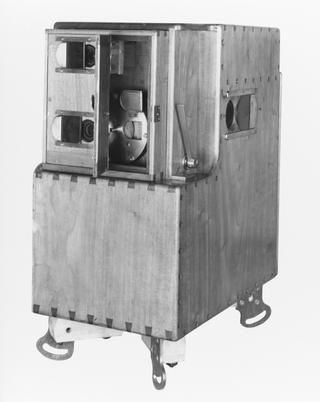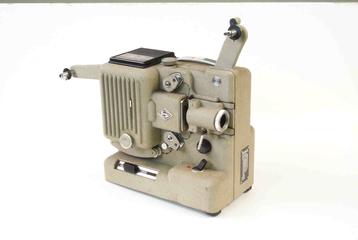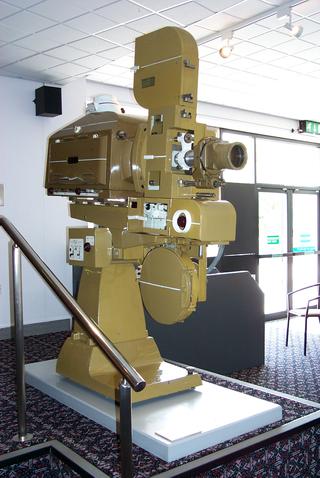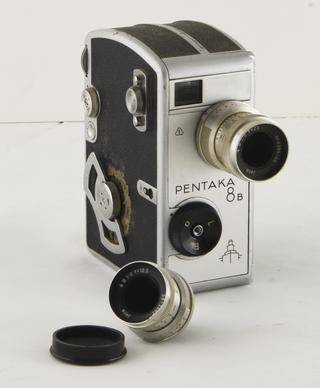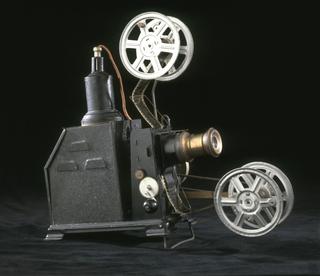
Debrie 'Le Parvo' 35mm Cine Camera






Debrie Parvo cine camera modified for two colour process. Series 9, No 43. By J Debrie, Paris. For 35mm film in internal magazine. Krauss Zeiss Tessar lens, f/3.5 F:50mm, Serial No 84933. For Kinemacolor or similar process; red/orange and green filter wheel behind lens. Hand turned; optical frame finder; through-film focusing; footage and fps counters, 1908
The Debrie Parvo was developed by Joseph Jules Debrie, built by his son Andre Debrie and was a relatively compact camera for the time. This particular camera has been modified and a red/orange and a green filter wheel placed behind the lens for a two-colour process, such as Kinemacolor. Kinemacolor was one of the first commercially successful colour movie film processes.
Details
- Category:
- Cinematography
- Collection:
- Kodak Collection
- Object Number:
- 1990-5036/7624
- Materials:
- mahogany (wood), white metal (unknown), glass, bone and leather
- Measurements:
-
overall: 210 mm x 210 mm x 255 mm,
- type:
- cine camera
- credit:
- The Kodak Collection at the National Media Museum, Bradford
